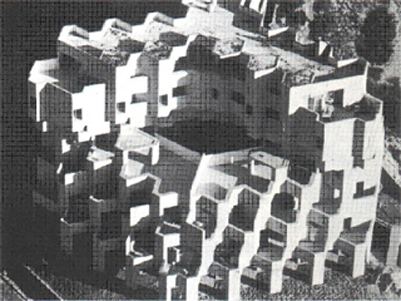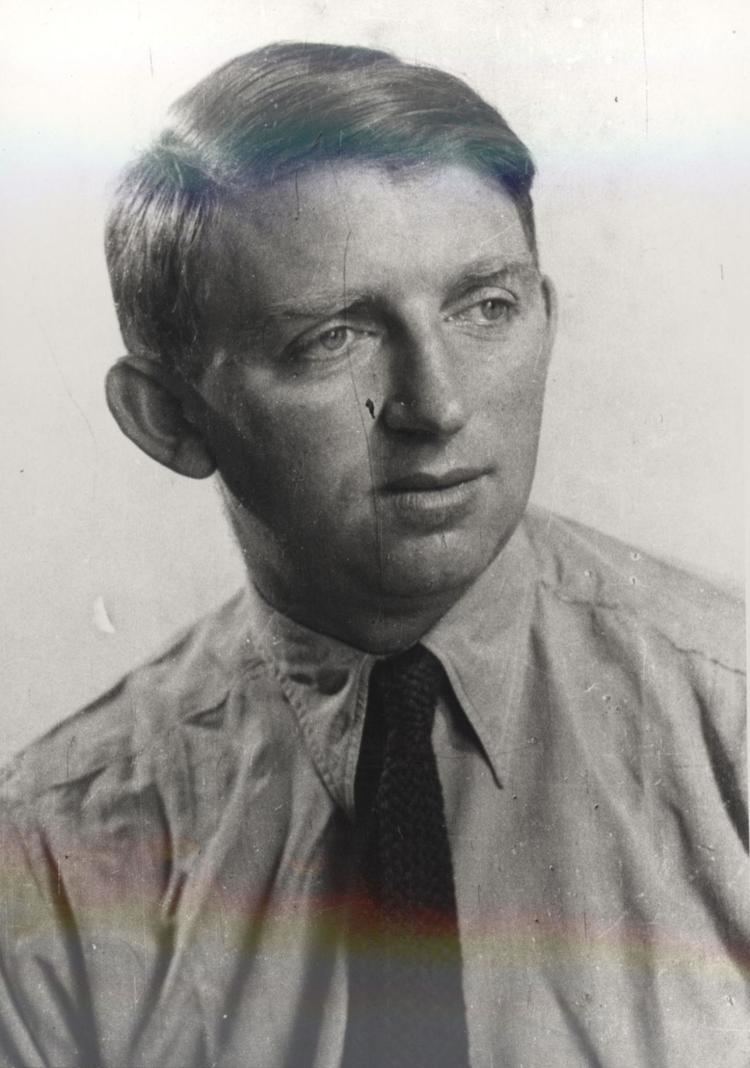Role Architect | Name Arieh Sharon Occupation Architect | |
 | ||
Buildings Ichilov Hospital - now Tel Aviv Sourasky Medical Center, Beilinson Hospital - now Rabin Medical Center Books Kibbutz + Bauhaus: An Architect's Way in a New Land Structures Tel Aviv Sourasky Medical Center, Rabin Medical Center | ||
Un jour notre Histoire du 28 mai 2018 – Le bâtisseur d’Israël, Arieh Sharon
Arieh Sharon (Hebrew: אריה שרון; May 28, 1900 – July 24, 1984) was an Israeli architect and winner of the Israel Prize for Architecture in 1962. Sharon was a critical contributor to the early architecture in Israel and the leader of the first master plan of the young state, reporting to then Prime Minister, David Ben-Gurion. Sharon studied at the Bauhaus in Dessau under Walter Gropius and Hannes Meyer and on his return to Israel (then Palestine) in 1931, started building in the international or so-called Bauhaus style in Tel Aviv. Sharon built private houses, cinemas and in 1937 his first hospital, a field in which he specialized in his later career, planning and constructing many of the country's largest medical centers.
Contents
- Un jour notre Histoire du 28 mai 2018 Le btisseur dIsral Arieh Sharon
- Early life
- Architectural studies
- Tel Aviv in the 1930s
- Kibbutz planning in the 1940s
- Urban planning
- Private practice
- 19541964 Arieh Sharon Benjamin Idelson Architects Tel Aviv
- 19651984 Arieh Sharon Eldar Sharon Architects Tel Aviv
- Critical acclaim
- Honors and professional membership
- Books
- Articles
- Exhibitions
- References

During the War of Independence in 1948, Sharon was appointed head of the Government Planning Department, whose main challenge was where to settle the waves of immigrants who were arriving in the country, and in 1954 returned to his private architectural office. In the Sixties, he expanded his activities abroad and during the next two decades built the Ife University campus in Nigeria. As the city of Tel Aviv rose from three and four storey buildings to multi-storey buildings in the Sixties and Seventies, Sharon’s office designed many high-rise buildings for the government and for public institutions.

Sharon's grandson, Arad Sharon, is also an architect.

Early life

Ludwig Kurzmann (later Arieh Sharon) was born in Jaroslau, Galicia, Austria-Hungary, (now Jaroslaw, Poland) in 1900. After graduating from high-school in 1918, he studied at the German Technical High School in Brno. In 1920 he emigrated to Palestine with a group of young pioneers belonging to the “Shomer Hatzair” movement and worked for one year with a farmer in Zikhron Ya'akov. He joined Kvutzat Gan Shmuel in 1921 which evolved into a Kibbutz, working as a beekeeper, and later, taking charge of planning and constructing simple farm buildings, cow-sheds and dwelling units. In 1926, on one year’s leave from the kibbutz, he traveled to Germany to extend his knowledge in building and architecture.
Architectural studies
Sharon spent a month in Berlin and arrived at the Bauhaus in Dessau, where he was admitted to the preliminary course – the famous Bauhaus Vorkurs – by Walter Gropius, the founder of the Bauhaus. Sharon studied under Josef Albers, whose teachings were based on letting the student experience different materials, trying them out, and making experiments. Sharon’s exercises – turning two-dimensional sheets of paper and metal into three-dimensional shapes – were shown in a Bauhaus exhibition. In April 1927, Hannes Meyer was appointed head of the building department and Sharon was to be greatly influenced by his teacher’s pragmatical and functional approach to architecture. In 1928 he and two other Bauhäusler, Gunta Stölzl, head of the Bauhaus weaving workshop and the student Peer Bücking visited the Vkhutemas Academy in Moscow, an avant garde art school with similar aims as the Bauhaus. In 1929, some time after their return, Sharon and Stölzl were married and their daughter Yael was born. In the same year, he received his Bauhaus diploma and was immediately put in charge of Hannes Meyer’s architectural office in Berlin, to supervise the construction of the Bundesschule des Allgemeinen Deutschen Gewerkschaftsbundes (ADGB Trade Union School) in Bernau bei Berlin,.
Next to the Bauhaus school buildings in Dessau, it was the second largest project ever undertaken by the Bauhaus. The building underwent an extenive retoration which was completed in 2007. It is a protected building and in 2012 it was proposed for World Heritage Site listing.
Tel Aviv in the 1930s
In 1931, he returned to Palestine and opened his architectural office in Tel Aviv, while Gunta Stölzl emigrated to Switzerland with their daughter, Yael. In 1936 the two divorce.
Sharon’s first commission in Tel Aviv was the construction of four pavilions for the Histadrut (General Federation of Labour) exhibit at the Levant Fair in 1932. These pavilions, for which he had won first prize in an architectural competition, were composed of modular wooden elements, progressively growing in height and length, covered by jute. There followed a series of buildings in the so-called international style which would help define the city's architecture as the "White City." In addition he built residential cooperative housing estates, private houses, the central administrative seat of the Histadrut in Tel Aviv, and in 1936 his first hospital for 60 beds, near Tel Aviv.
Sharon’s housing estates, known as Meonot Ovdim in Hebrew, were built around large garden patios in the center, a continuous group layout, a public space for the residents, while communal services, such as kindergarten, laundry, shops and synagogue, were placed on the ground-floor.
A distinctive feature of Tel Aviv’s town-scape are the pilotis on which most of the apartment buildings in the residential quarters are raised. This feature was achieved on the part of several avant-garde architects in the early thirties in a fierce struggle against the existing municipal bye-laws. The spacious voids between the pillars created a shaded street-scape, added to the natural ventilation during the hot summer days and connected the pavements with the green areas.
Kibbutz planning in the 1940s
During the second world war, building activities in the big towns all but stopped, due to the lack of fundamental building materials such as concrete and iron. Sharon began building simple structures in the kibbutzim, above all community buildings and schools, which were constructed from local materials, like sand, bricks and lime-stones. The dining hall in a Kibbutz forms the center of the community, where in addition to its primary function, the members meet on social occasions, cinema or theater performances, or political meetings. The school communities were built for 200–300 children of several kibbutzim, where the youngsters aged 12–18 lived, studied and worked together. Their layout was in fact that of a micro-kibbutz.
Sharon's main activity, however, was directed towards planning in the kibbutzim. He designed a great number of outline plans for existing collective settlements and their extensions as well as general layouts for new agricultural settlements, and school communities.
Other activities included a series of lectures at the Technion in Haifa, covering subjects such as:
Urban planning
When the State was created in 1948 the overwhelming majority of the population was concentrated in a narrow coastal strip. One of the main tasks of the newly established Government Planning Department, headed by Sharon and directly responsible to the Prime Minister’s Office under David Ben-Gurion, was to find solutions for the great waves of immigrants who entered Israel after the declaration of Independence. The team consisted of 180 urban planners, architects, engineers and economists. They set up a National Outline Plan, dividing the country into planning regions in accordance with economic resources, geographic features, communication factors and historical background. The regional structure would be completed by the development of a regional urban center – a medium-sized town. Thus the plan provided for the establishment of 20 new towns, dispersed all over the country and established guidelines for industrial estates to be located close to the new towns. Sharon's plan led to the creation of development towns for example: Beit She'an, Kiryat Gat, and Upper Nazareth. Agricultural regions were planned expanding into the southern Negev desert. A national water plan was set up that would carry water from the surplus areas in the north to the dry, water-poor areas in the south. And a network of National Parks was devised, spreading all over the country, exploiting the existing landscape features, nature reserves and historical sites. At the end of 1953, Sharon was invited by the United Nations to serve as a planning expert in a Seminar on Housing and Community Improvement, held in New Delhi, and afterwards to Burma and Japan.
Private practice
Sharon returned to his private practice in 1954, and set up a partnership with the architect Benjamin Idelson. From 1965 onwards he worked together with his son, Eldar Sharon, until his death in 1984.
1954–1964: Arieh Sharon, Benjamin Idelson, Architects, Tel Aviv
Selected buildings:
1965–1984: Arieh Sharon, Eldar Sharon, Architects, Tel Aviv
Selected buildings:
Critical acclaim
In Kibbutz + Bauhaus: An Architect's Way in a New Land, Bruno Zevi wrote:
"Sharon as a man, - as pioneer and citizen, as an artist: could one risk separating such aspects or levels of a single, overflowing personality? Of course, here the architect is privileged; behind his forms, however, one cannot fail to grasp the human, spiritual and social aspirations of a people. This is partially true of all architects, because their work is always involved in a collective context; but for none, or perhaps only for very few others, is it evident in the same degree. In fact, Sharon could have been a driving force in the old-new land's adventure, even without being a leader and an architect; or could have been simply a key-figure in the profession, as he was after the 1948 War of Independence in Ben Gurion's technical office, and later as president of the Association of Engineers and Architects; or, again, he could have been strictly an artist in his own right. The inner meaning of his architecture derives from these pendular alternatives, from the joyful refusal to select one of them, reducing the range of his vital tentacles."
Honors and professional membership
Books
Articles
Exhibitions
Goethe Institute Tel Aviv, 1994.
